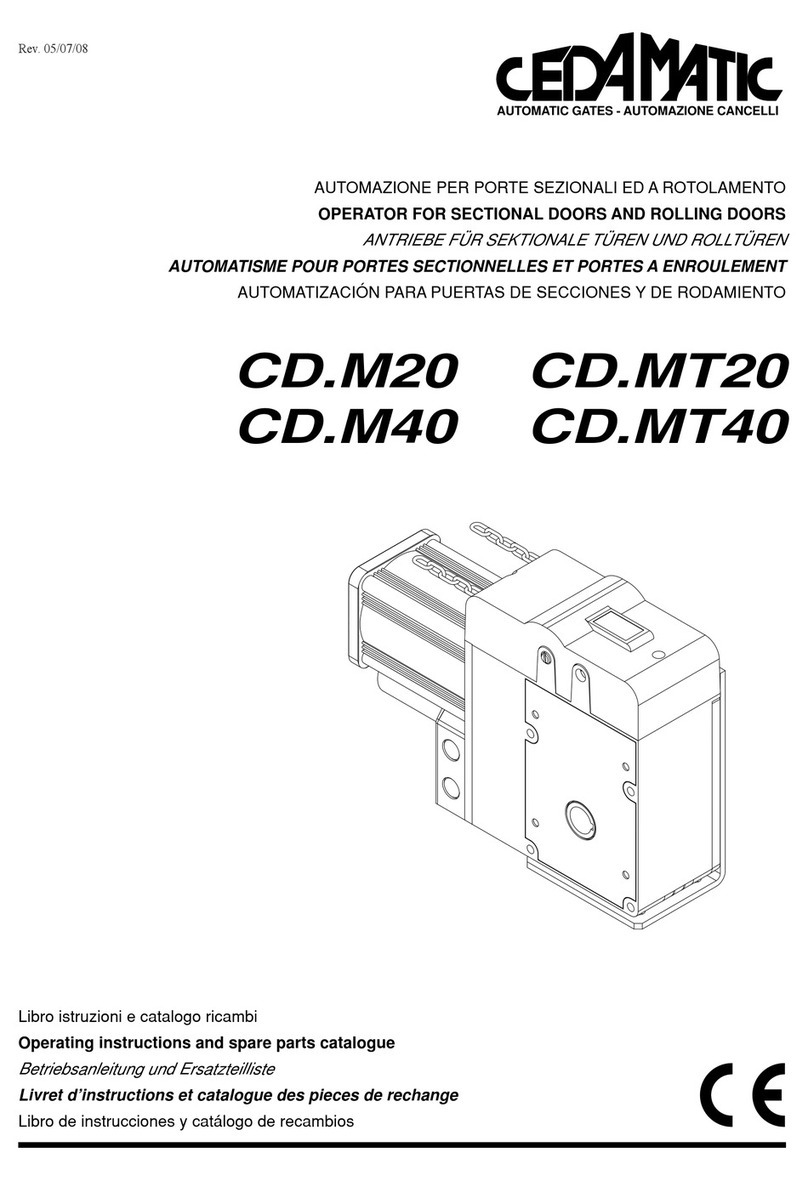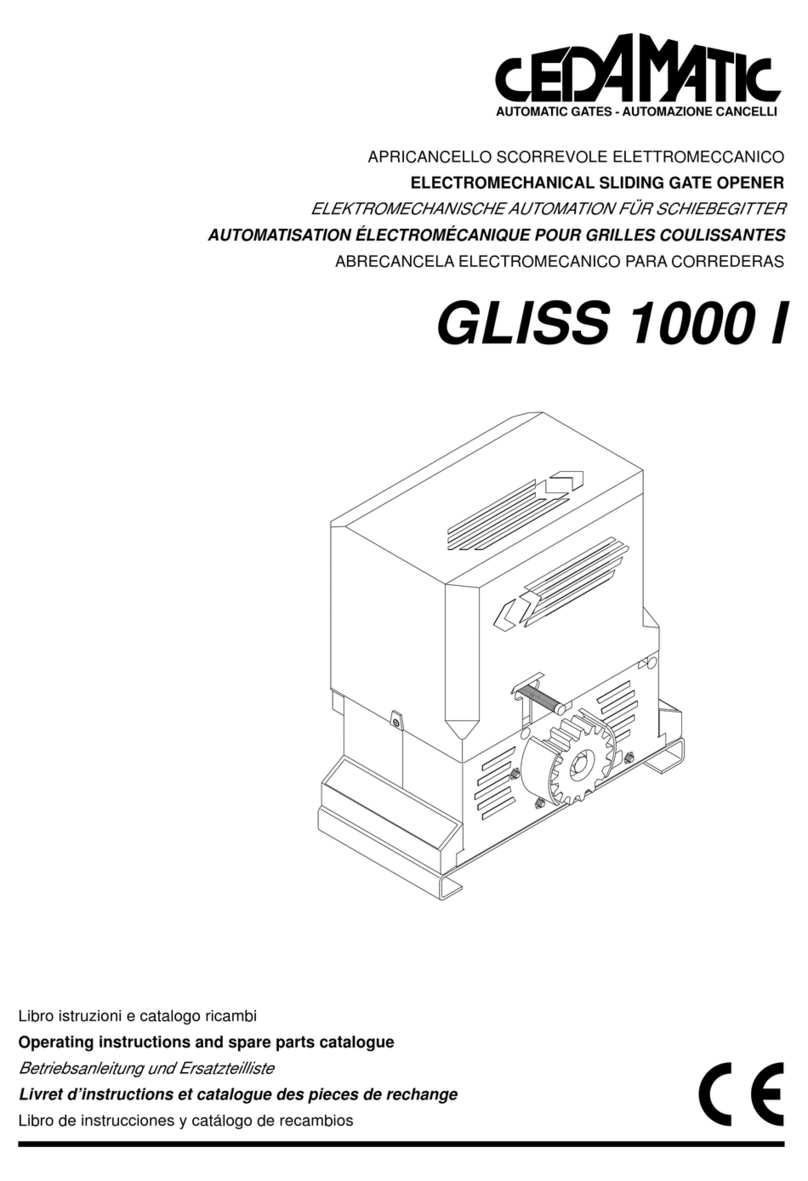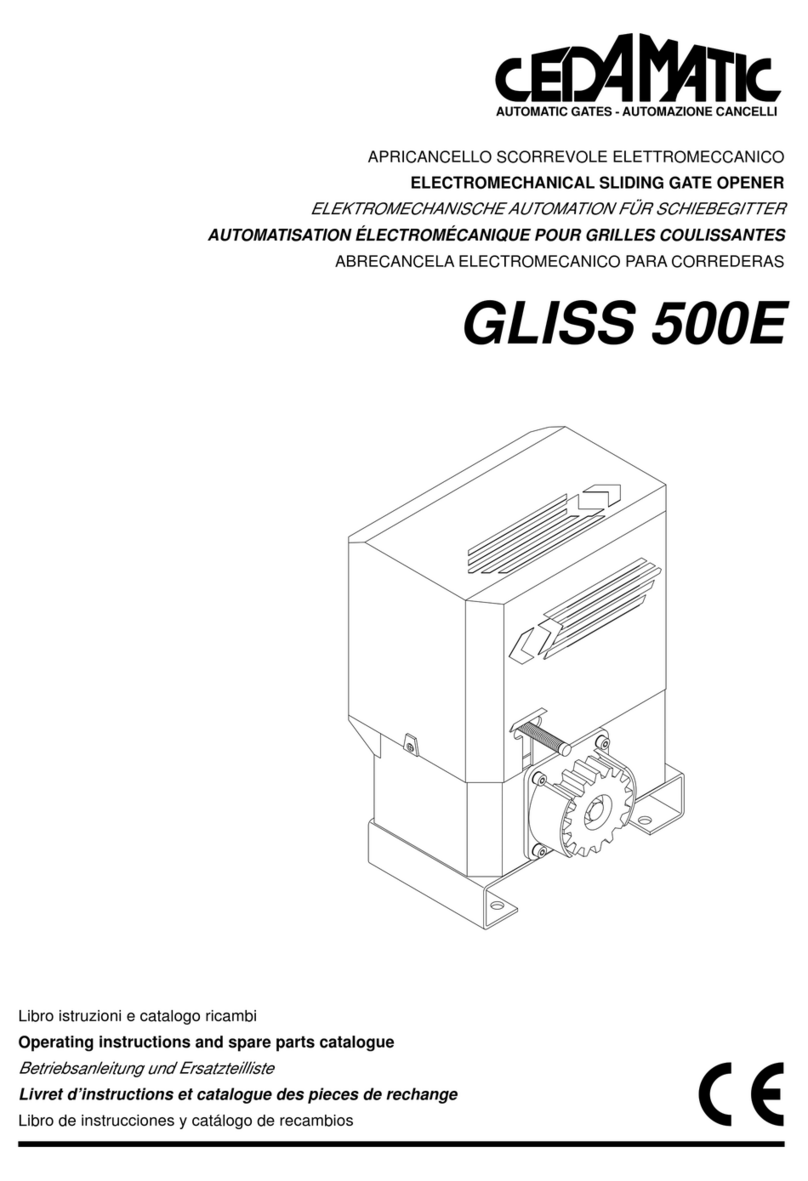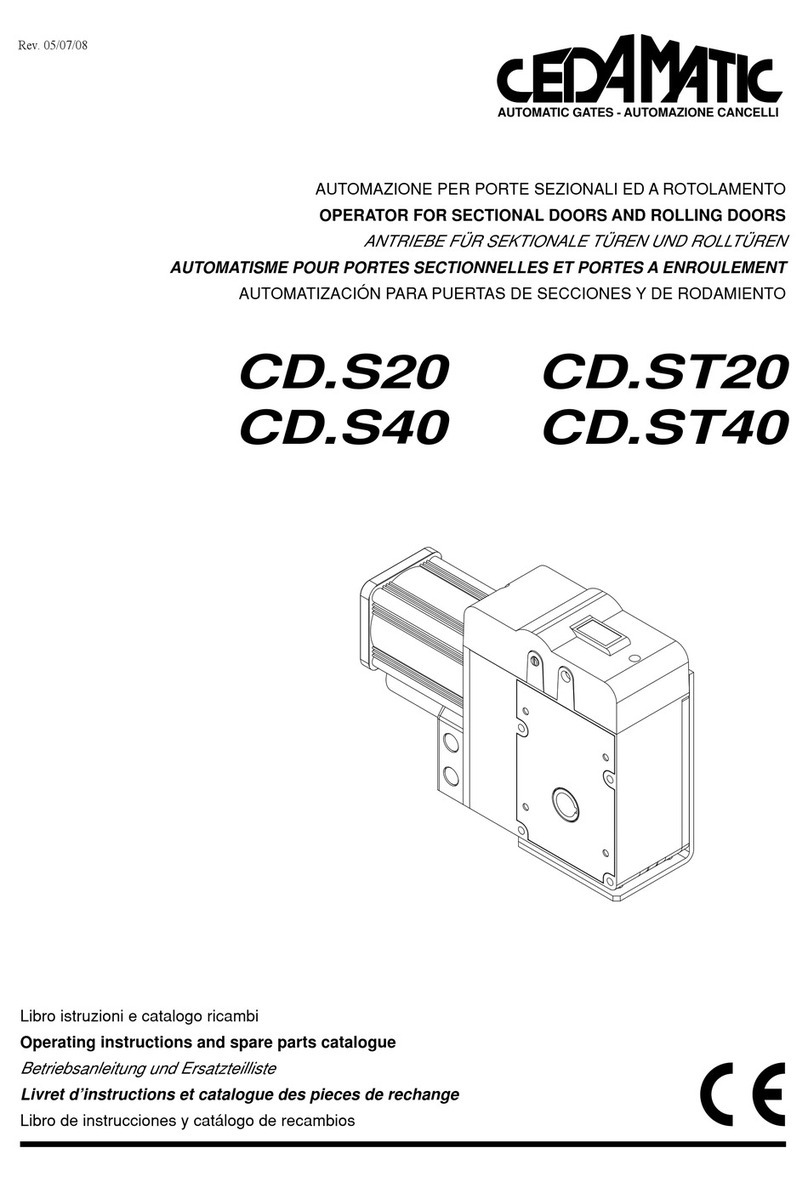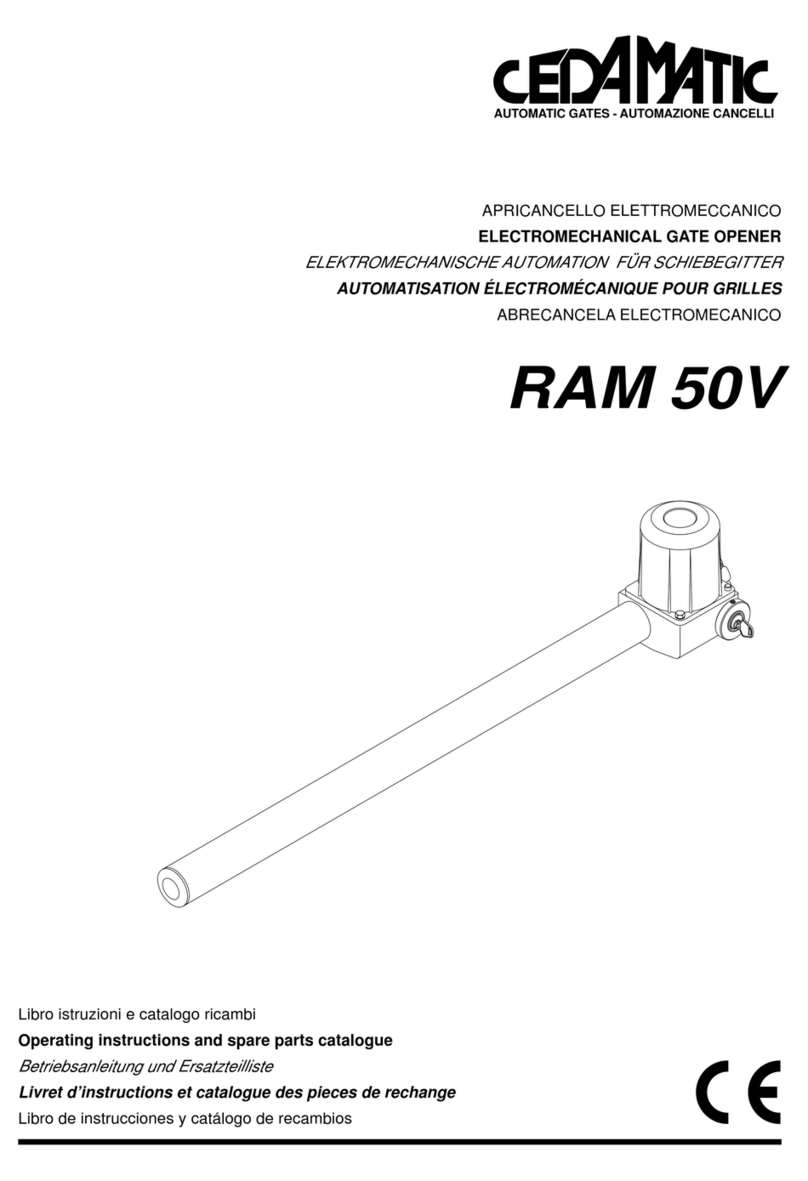
2
Dichiarazione CE di Conformità
Dichiarazione in accordo alle Direttive 2004/108/CE(EMC); 2006/95/CE(LVD)
Fabbricante: CEDAMATIC s.r.l.
Indirizzo: Via dell'Artigianato, 36 - 36050 Bolzano Vicentino (VI) - Italia
Dichiara che il prodotto:
Attuatore elettromeccanico 400Vac per cancelli scorrevoli modello:
GLISS 2000TC
è conforme alle condizioni delle seguenti Direttive CE:
• DIRETTIVA2004/108/CE DELPARLAMENTOEUROPEO EDELCONSIGLIO del15 dicembre2004 concernenteil ravvicinamento
delle legislazioni degli Stati membri relative alla compatibilità elettromagnetica e che abroga la direttiva 89/336/CEE, secondo
le seguenti norme armonizzate:
EN 61000-6-2:2005, EN 61000-6-3:2007.
• DIRETTIVA2006/95/CE DELPARLAMENTO EUROPEO E DELCONSIGLIO del 12 dicembre 2006 concernente il ravvicinamento
delle legislazioni degli Stati membri relative al materiale elettrico destinato ad essere adoperato entro taluni limiti di tensione,
secondo le seguenti norme armonizzate:
EN 60335-1:2002 + A1:2004 + A11:2004 + A12:2006 + A2:2006 + A13:2008; EN 60335-1-103:2003.
se applicabile:
• DIRETTIVA1999/5/CE DELPARLAMENTO EUROPEO E DELCONSIGLIO del 9 marzo 1999 riguardante le apparecchiature radio
e le apparecchiature terminali di telecomunicazione e il reciproco riconoscimento della loro conformità, secondo le seguenti
norme armonizzate:
ETSI EN 301 489-3 V1.4.1 (2002) + ETSI EN 301 489-1 V1.4.1 (2002) + ETSI EN 300 220-3 V1.1.1 (2000) + EN 60950-1 (2001)
CE Declaration of Conformity
Declaration in accordance with Directives 2004/108/CE (EMC); 2006/95/CE (LVD)
Manufacturer: CEDAMATIC s.r.l.
Address: Via dell'Artigianato, 36 - 36050 Bolzano Vicentino (VI) - Italia
Declares that the product:
Electromechanical actuator 400V AC for sliding gates, model:
GLISS 2000TC
conforms with the requirements of the following EC Directives:
• DIRECTIVE2004/108/CE OFTHE EUROPEAN PARLIAMENTAND COUNCIL,15 December 2004,in relation tothe harmonisation
of the legislation of member states regarding electromagnetic compatibility , in abrogation of Directive 89/336/CEE, per the
following harmonised standards:
EN 61000-6-2:2005, EN 61000-6-3:2007.
• DIRECTIVE 2006/95/CE OF THE EUROPEAN PARLIAMENTAND COUNCIL, 12 December 2006, in relation to the harmonisation
of the legislation of member states regarding electrical material intended to be used within certain voltage ranges, per the
following harmonised standards:
EN 60335-1:2002 + A1:2004 + A11:2004 + A12:2006 + A2:2006 + A13:2008; EN 60335-1-103:2003.
as applicable:
•DIRECTIVE 1999/5/CEOFTHE EUROPEAN PARLIAMENTANDCOUNCIL, 9March 1999in relationto radioequipment andtele-
communications terminals and the mutual recognition of their conformity, per the following harmonised standards:
ETSI EN 301 489-3 V1.4.1 (2002) + ETSI EN 301 489-1 V1.4.1 (2002) + ETSI EN 300 220-3 V1.1.1
(2000) + EN 60950-1 (2001)
